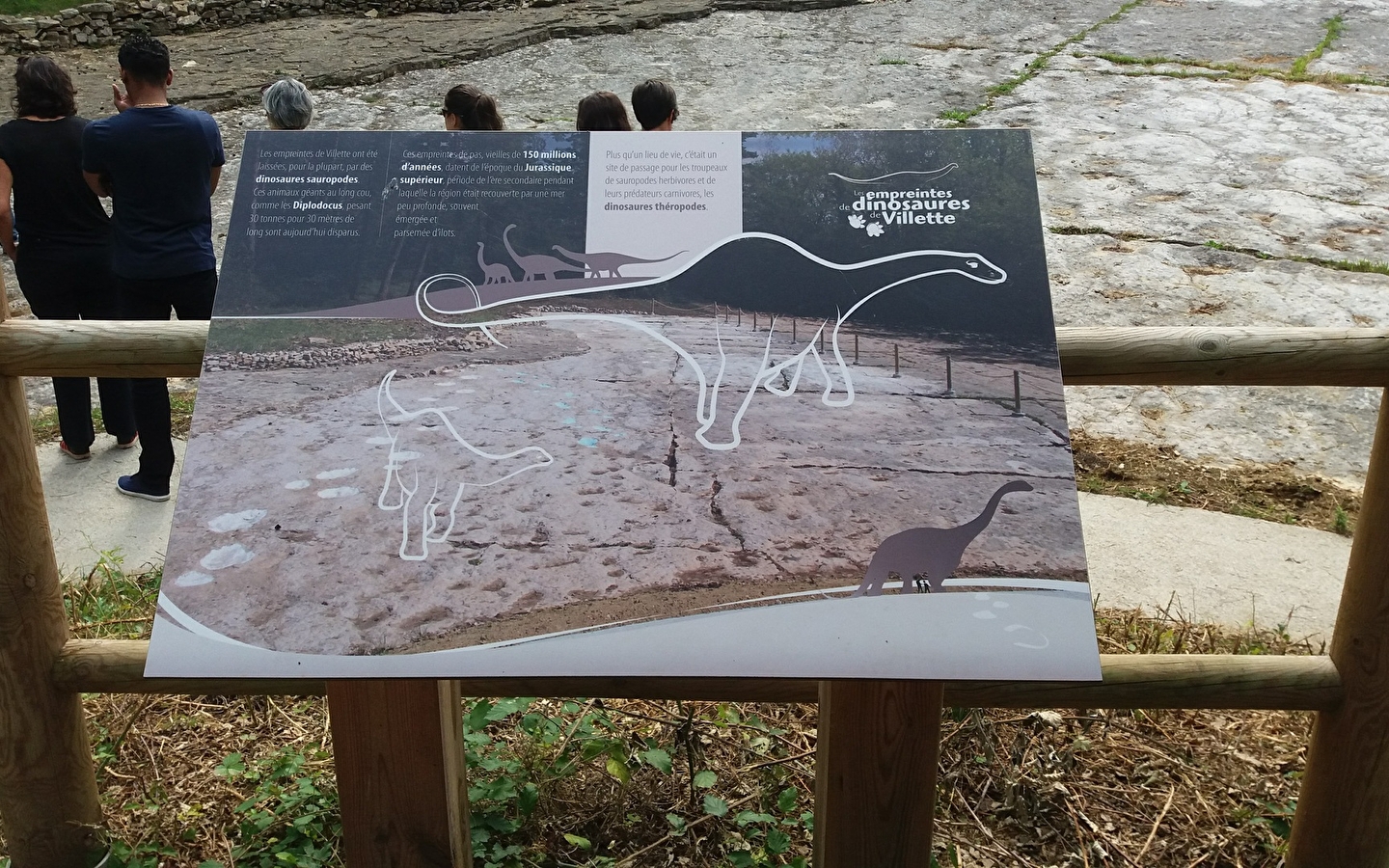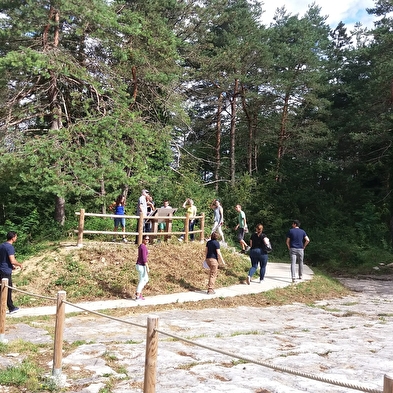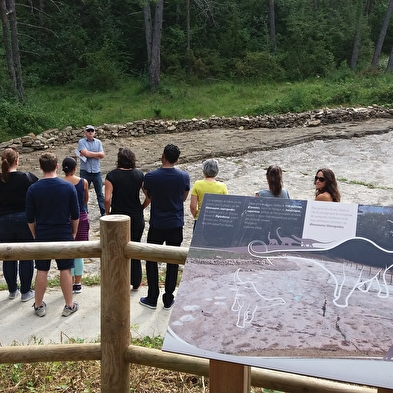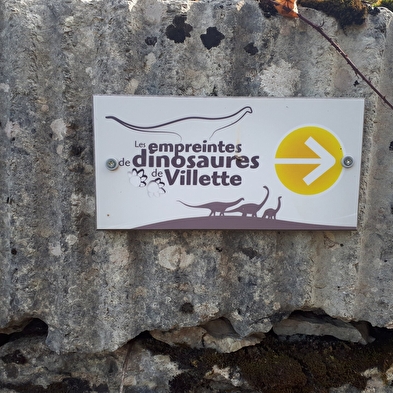
Les empreintes de dinosaures de Villette
These dozens of footprints date back 150 million years. They correspond to the movements of sauropods, diplodocus or brontosaurs, i.e. large herbivores weighing around twenty tonnes. The weight of these animals has left noticeable marks in the mud, like bulges 35-40 centimetres in diameter. In some cases, you can even make out their fingers! These dinosaurs were plantigrades at the back and digitigrades at the front.
Two parallel tracks run up the platform for some forty metres. In search of food, there must have been five or six of them, or perhaps more.
The footsteps left by these giants make us realize that the region was not entirely under water, as was long believed. We understand that there were shoals as well as emerged lands; islands large enough to feed entire herds.
But how did these traces reach us? Sediments covered them, sinking them deep into the earth; then plate tectonics jostled the layers, causing them to fold, fracture and rise to the surface. Glacier erosion then cleared them.
- French
- Pets not allowed
- Parking
From 01/01/2025 to 31/12/2025









